Abstract
Cabbage is the most important crop in Belarus’ vegetable production, producing 386 kt (thousand tonnes) in 2022, accounting for the largest share of the country’s vegetable production volume. Cabbage is cultivated over a wide area and therefore occupies an important position in land use. As it requires particularly fertile soil, it is grown intensively in suitable areas. In addition, cabbage has a long shelf life and can be consumed over a long period of time, so it is not only used to meet domestic demand, but is also produced for export. When it comes to tomatoes, there is demand for both fresh consumption and processing. The production of tomatoes for processing is stable through contract cultivation with processors, and they are used in processed foods and sauces. Because fresh tomatoes are mostly consumed at home, they are also grown in home gardens and by small-scale farmers, but the larger the scale, the more production tends to shift toward processing. Overall, vegetable production in Belarus is an important industry supporting both domestic consumption and exports, and improvements in land use and cultivation techniques will contribute to future growth.
Production (by vegetables)
In terms of vegetable production in Belarus from 1992 to 2022, the highest production volume was for cabbage in 2009, reaching 593 kt. This was the peak year, and production volume has been declining since then. Current cabbage production volume is about 65% of its peak volume, and production volume has been decreasing especially in recent years. This decrease is thought to be due to climate change, changes in agricultural policies, or changes in production methods due to advances in agricultural mechanization. On the other hand, cabbage remains a major crop in Belarus and a stable supply is needed for the domestic market and for export. However, despite the decline in production, cabbage remains a major crop. This change is thought to be due to factors such as the diversification of agricultural production, the introduction of new cultivation techniques, and increased efficiency in agriculture. There is also a growing interest in the production of tomatoes and other vegetables, with adjustments being made to the cultivation area to meet demand for processing and home use. Overall, it can be said that vegetable production in Belarus is becoming more stable year by year and is shifting towards a more efficient production system.
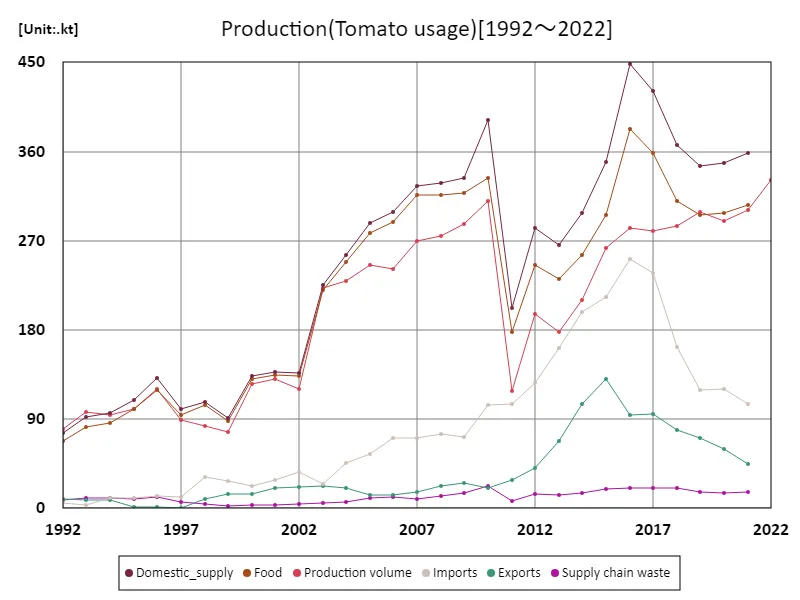

The maximum is 448kt[2016] of Domestic_supply, and the current value is about 79.9%
Yield(by vegetable)
Vegetable yields in Belarus have increased significantly in recent years, especially tomato production. Data from 1992 to 2022 shows that tomato yield in 2022 reached 47t/ha (47 tons per hectare), the highest figure ever recorded. As a result, tomatoes are maintaining 100% productivity compared to their peak and maintaining high yields. This trend can be attributed to technological advances such as improved cultivation techniques, improved varieties and the introduction of irrigation systems. On the other hand, the production volume of cabbage and other vegetables fluctuates depending on climatic conditions and market demand, and does not necessarily show stable growth. The tomato’s stable yield makes it well suited to situations where supply is required, especially for processed foods and home consumption. As a whole, it can be said that tomatoes have firmly established themselves as an important crop in Belarus, and advanced efforts are being made towards improving agricultural efficiency and sustainable production. 5/5.
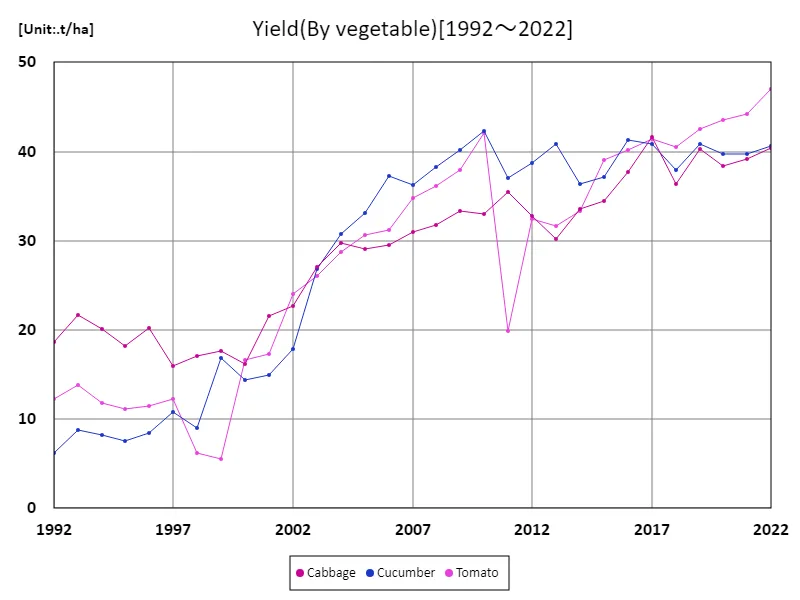

The maximum is the latest one, 47t/ha of Tomato
Land use (by vegetables)
Looking at the land use situation for vegetables in Belarus in 2022, cabbage will account for the largest amount of land, at 9.55 kha (thousand hectares), ensuring a particularly large cultivation area compared to other vegetables. The overall average is 7.41kha, which shows that vegetables other than cabbage are cultivated on relatively small areas. The total land use is 22.2kha, and we are striving to ensure a stable supply by efficiently allocating land suitable for vegetable cultivation and concentrating on major crops. Cabbage is the most widely grown variety, both to meet domestic demand and to meet some export needs. On the other hand, although tomatoes and other vegetables have limited land use, there is a strong tendency to cultivate them for high yields, and efficient production techniques are being introduced. In this way, land allocation for vegetable cultivation in Belarus is adjusted according to the demand and characteristics of each crop, and efforts are ongoing to establish a stable supply system.
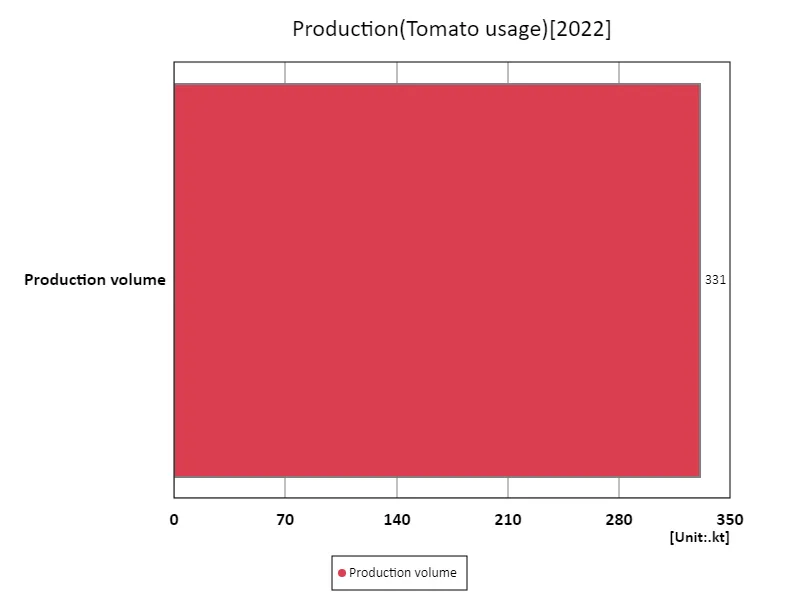

The maximum is 331kt of Production volume, the average is 331kt, and the total is 331kt
Tomato usage
Looking at the trends in tomato production by use in Belarus, domestic supply was the highest at 448kt (thousand tons) in 1992. This level is still being maintained, with tomato production for domestic supply remaining the largest stable use. This trend reflects the fact that tomatoes are a commonly consumed vegetable and therefore enjoy high demand in the country. It is particularly popular for eating raw and for cooking at home, and consumption is increasing in home gardens and local markets. Demand for processing tomatoes is also increasing, and supply is increasing for products such as processed foods, canned goods, and sauces. For processing, methods such as contract farming have been introduced to stabilize quality and yield. In this way, it can be said that while Belarus maintains a production structure centered on domestic supply of tomatoes, the growth of the processing industry has led to the development of a production system that can accommodate a variety of uses. This allows us to supply products in response to changes in consumer needs and the market.
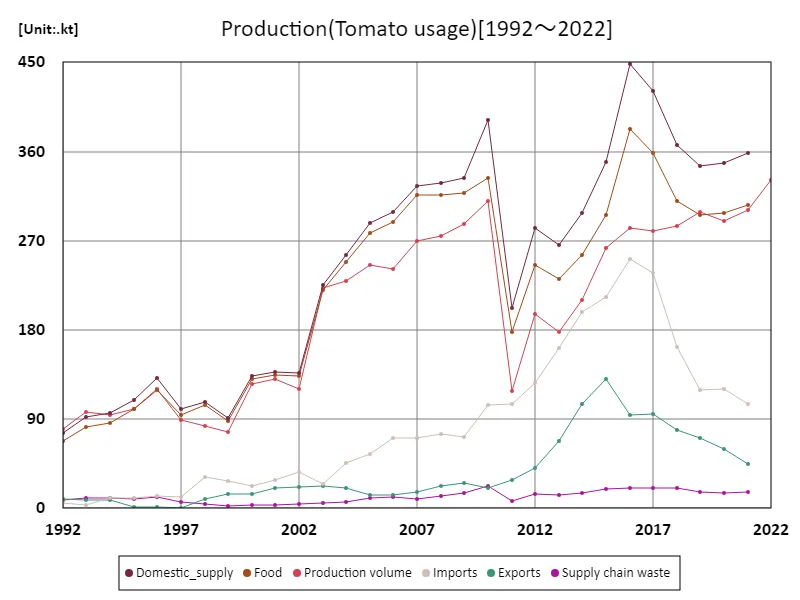

The maximum is 448kt[2016] of Domestic_supply, and the current value is about 79.9%
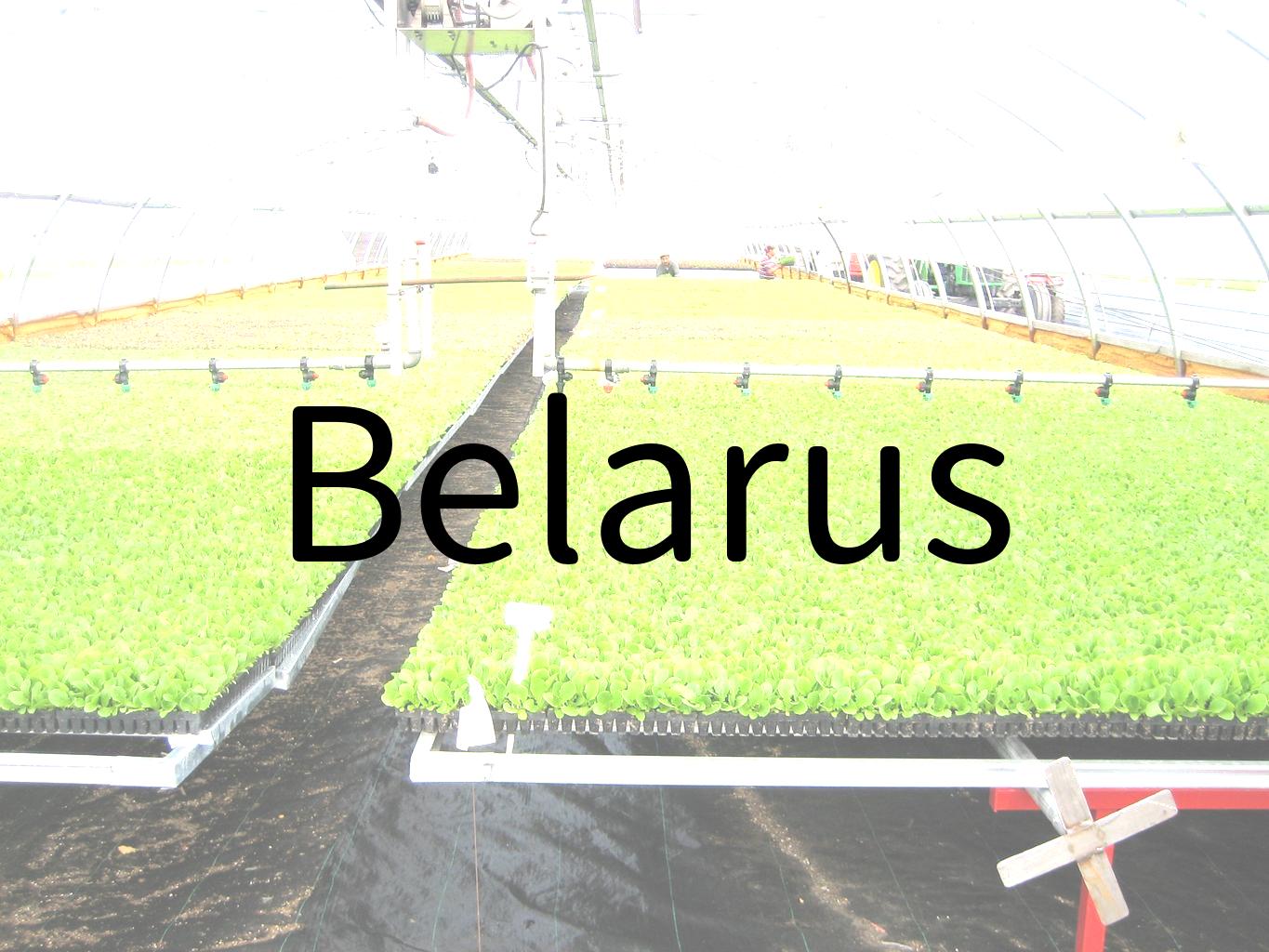


Comments